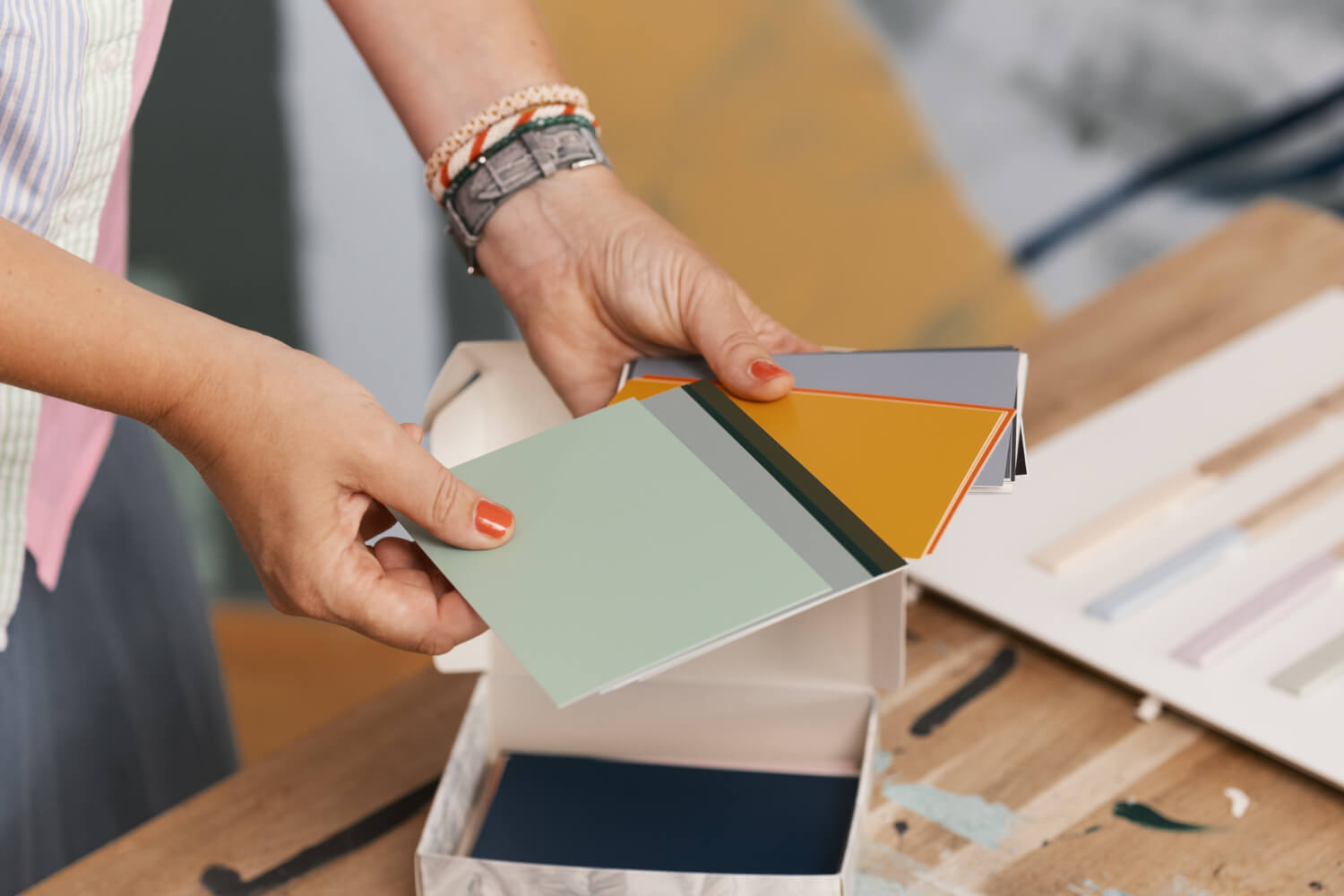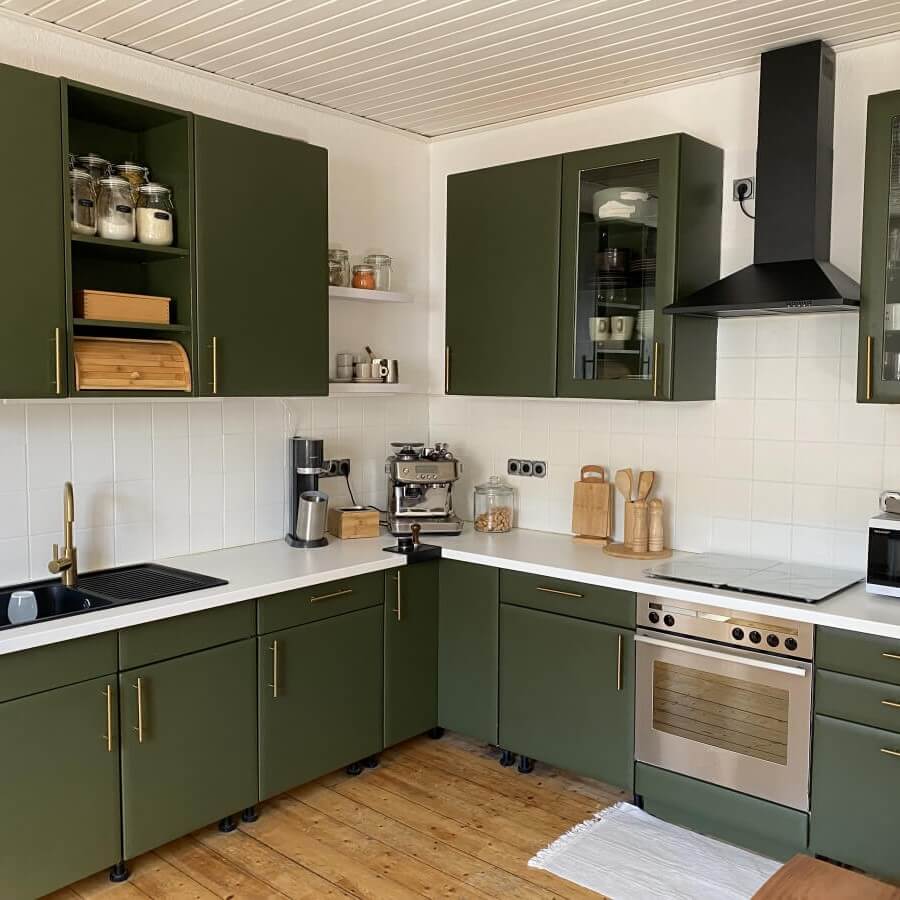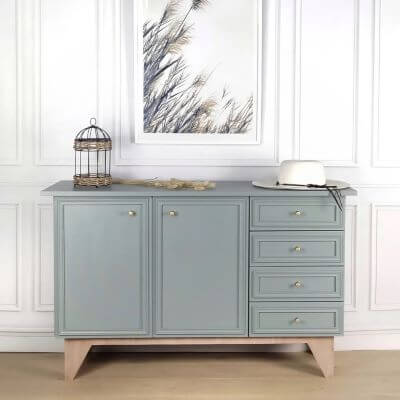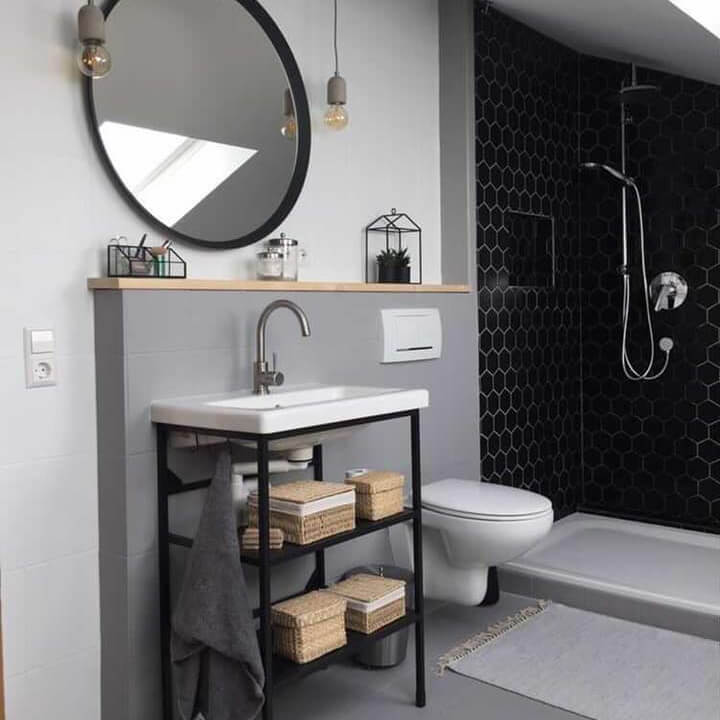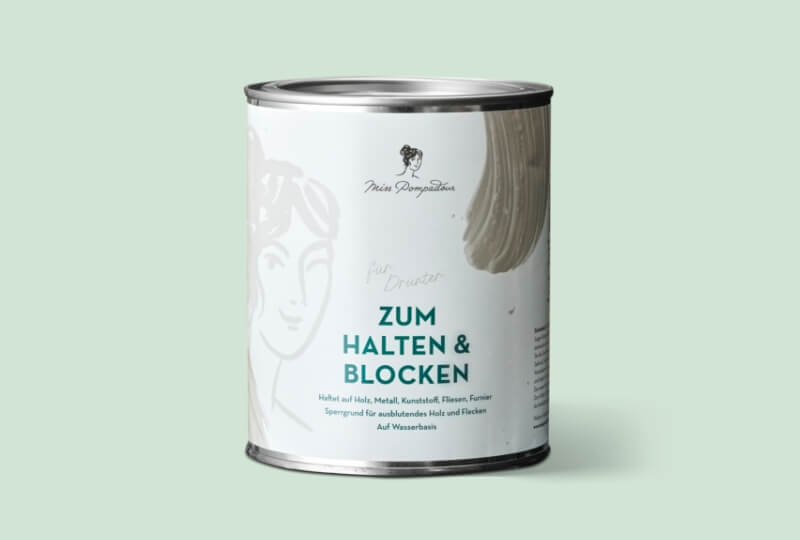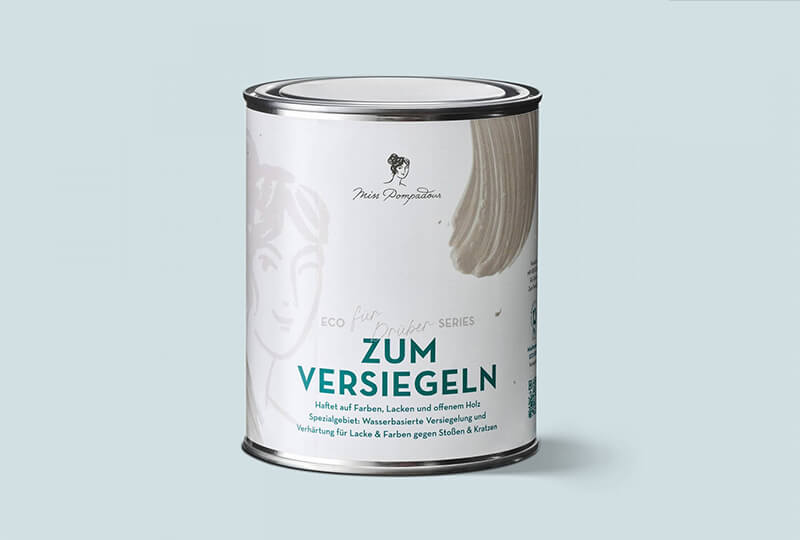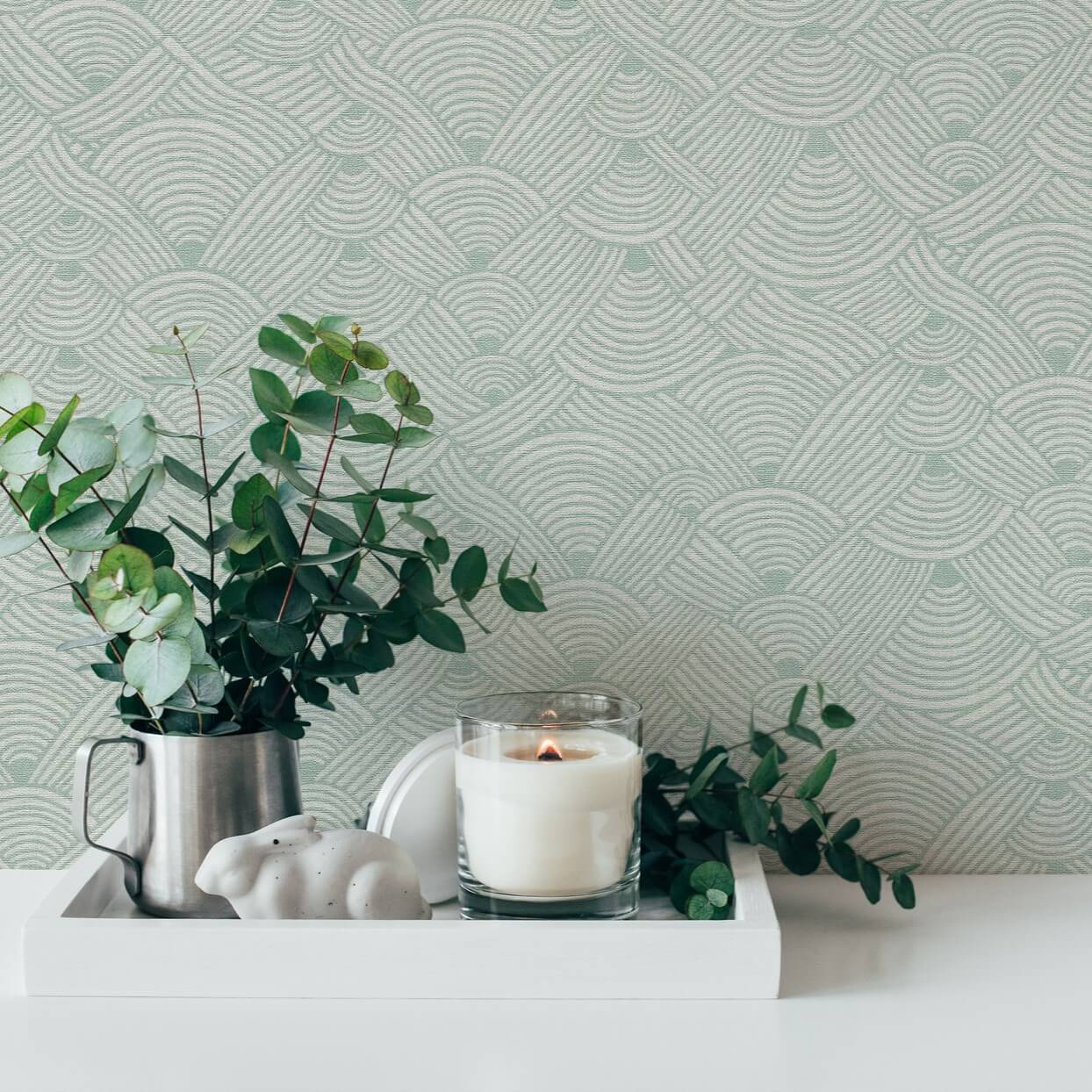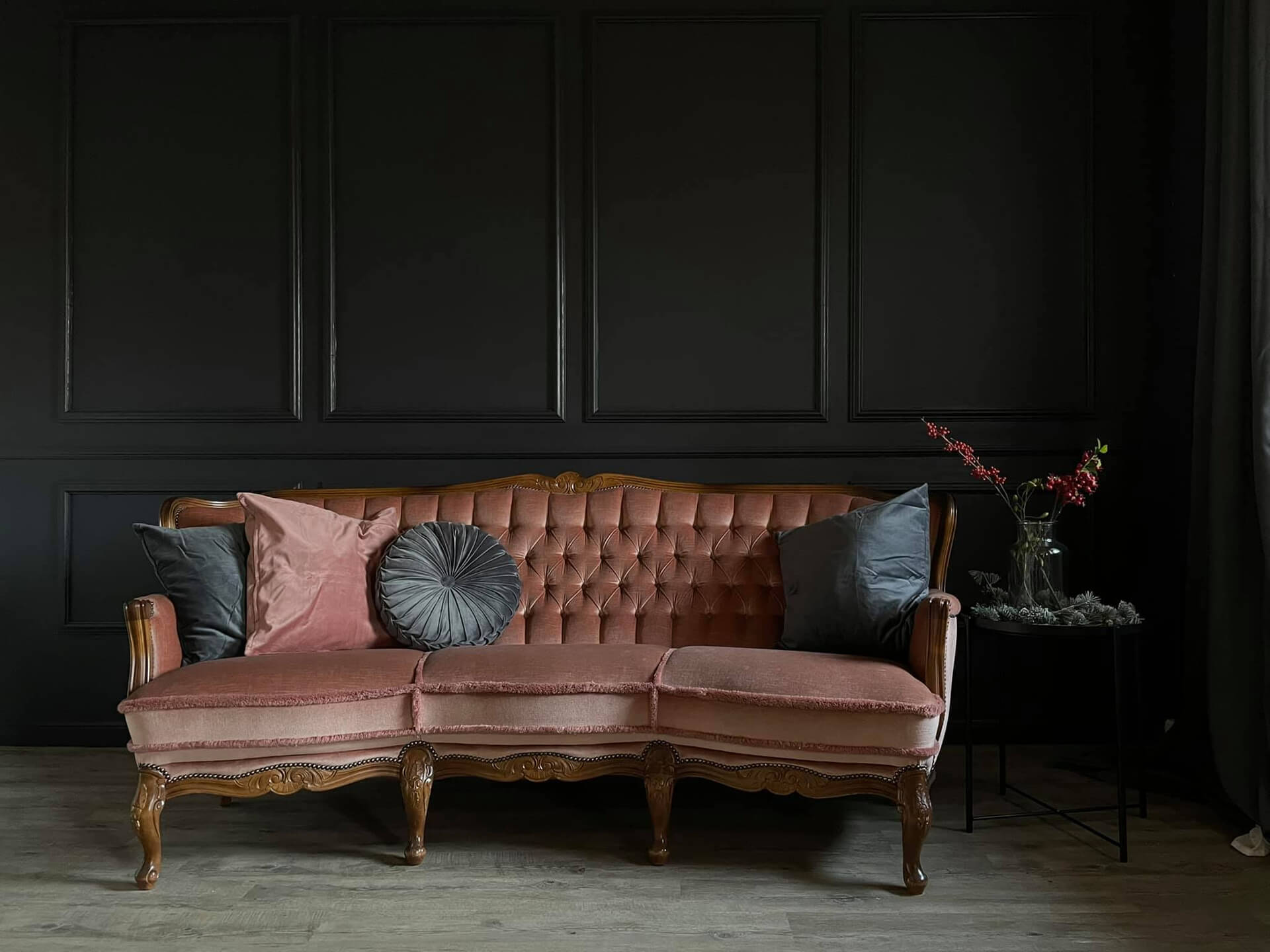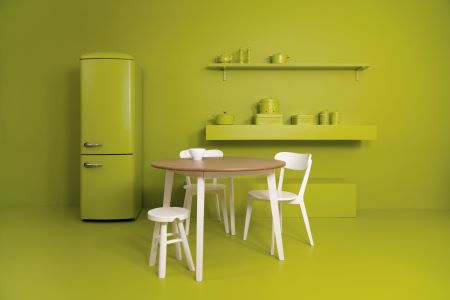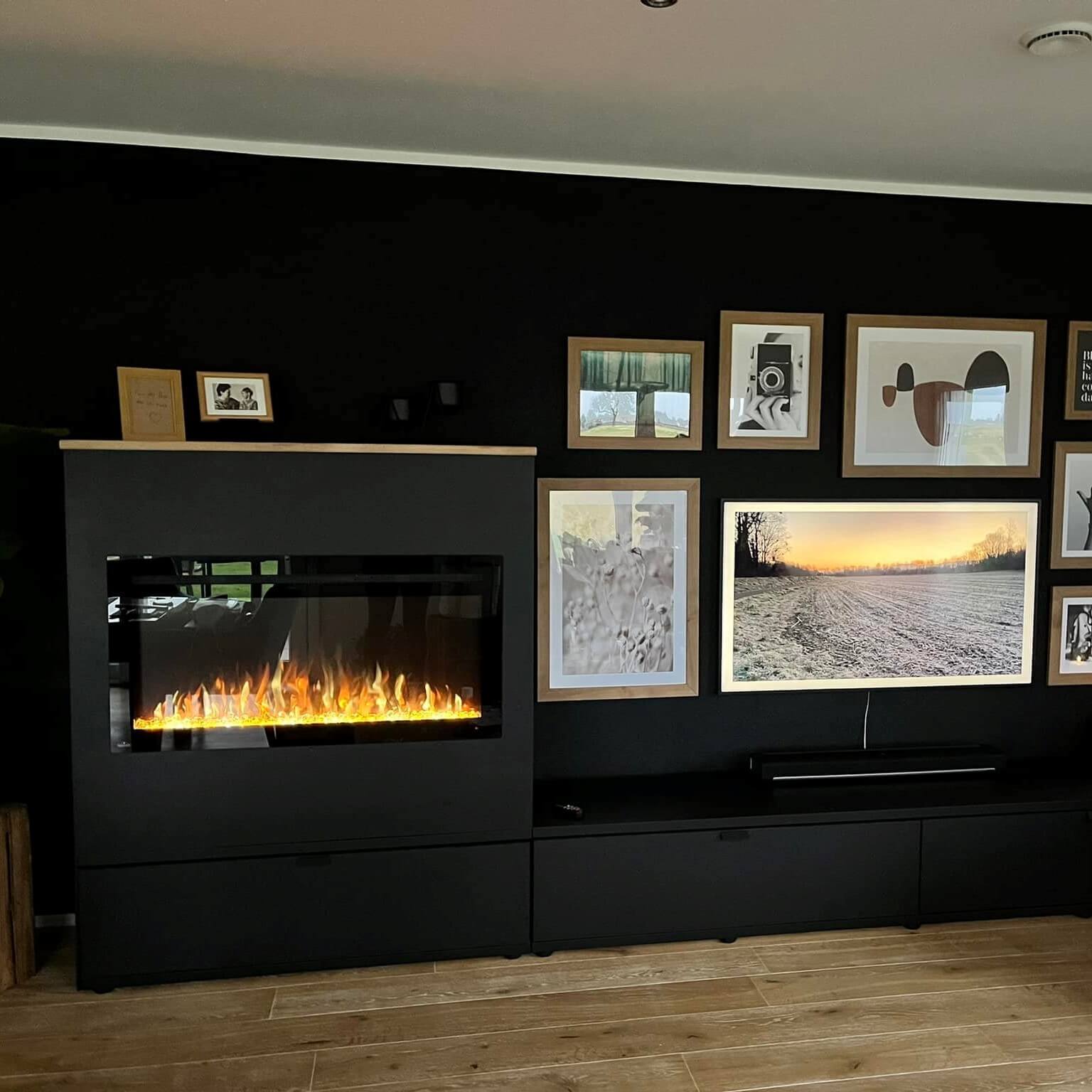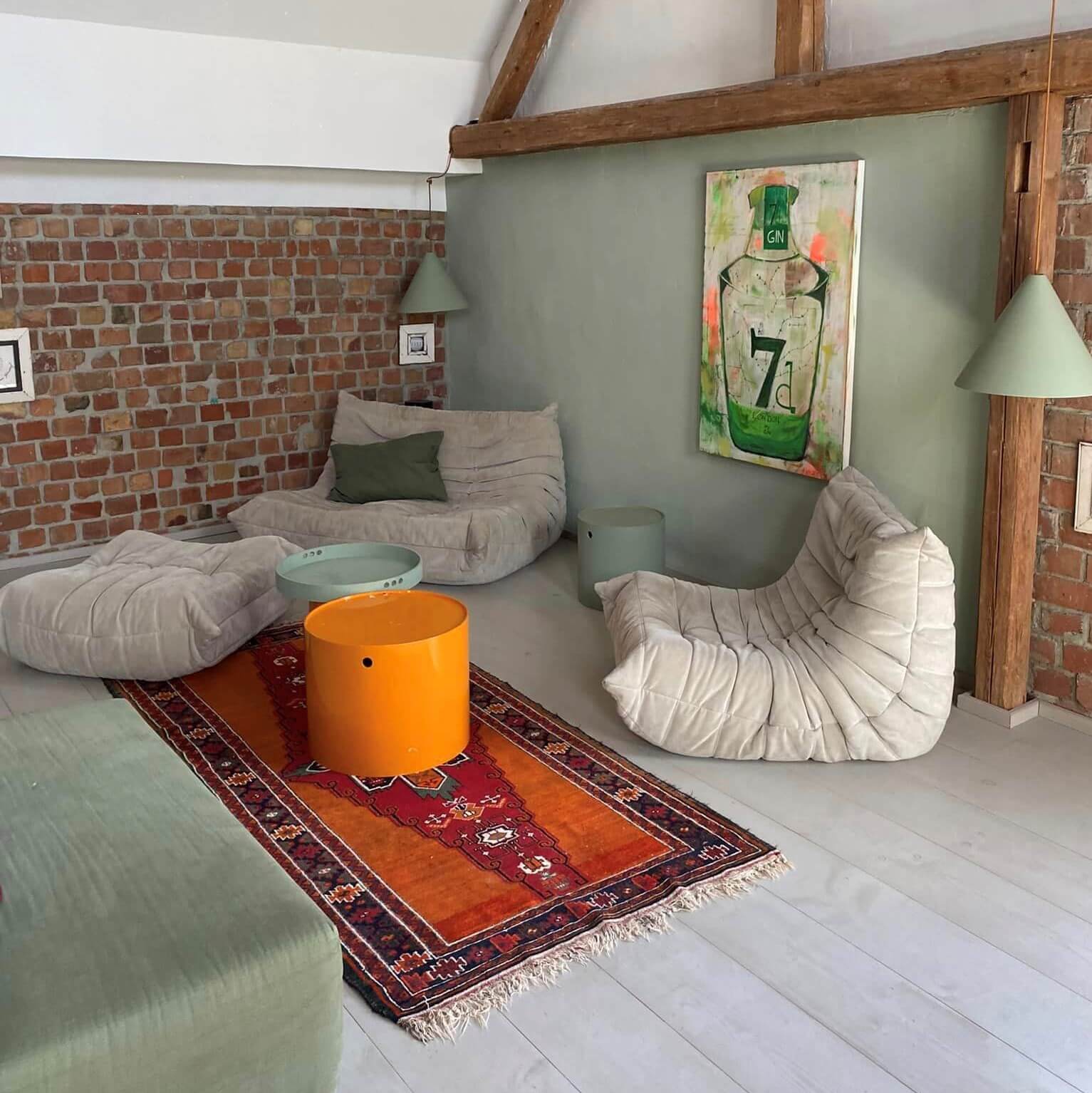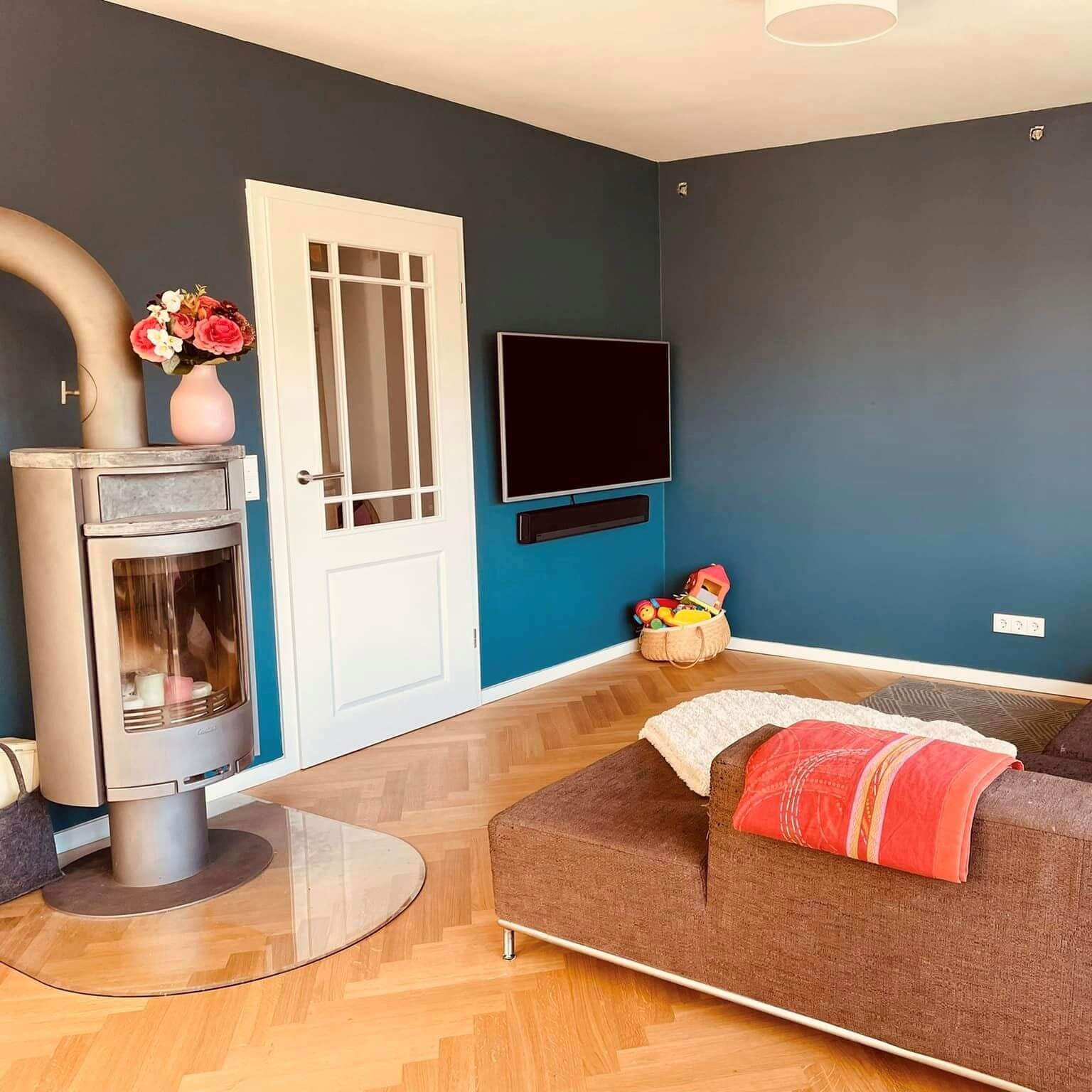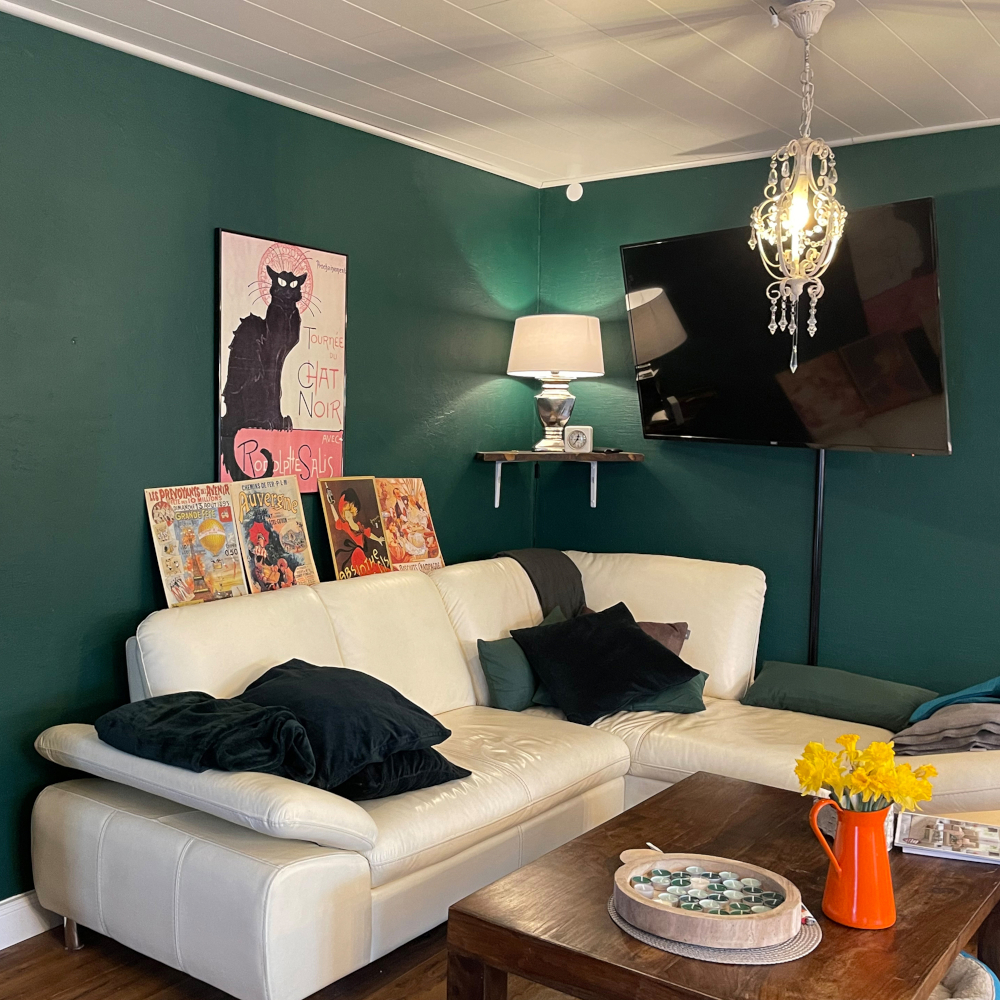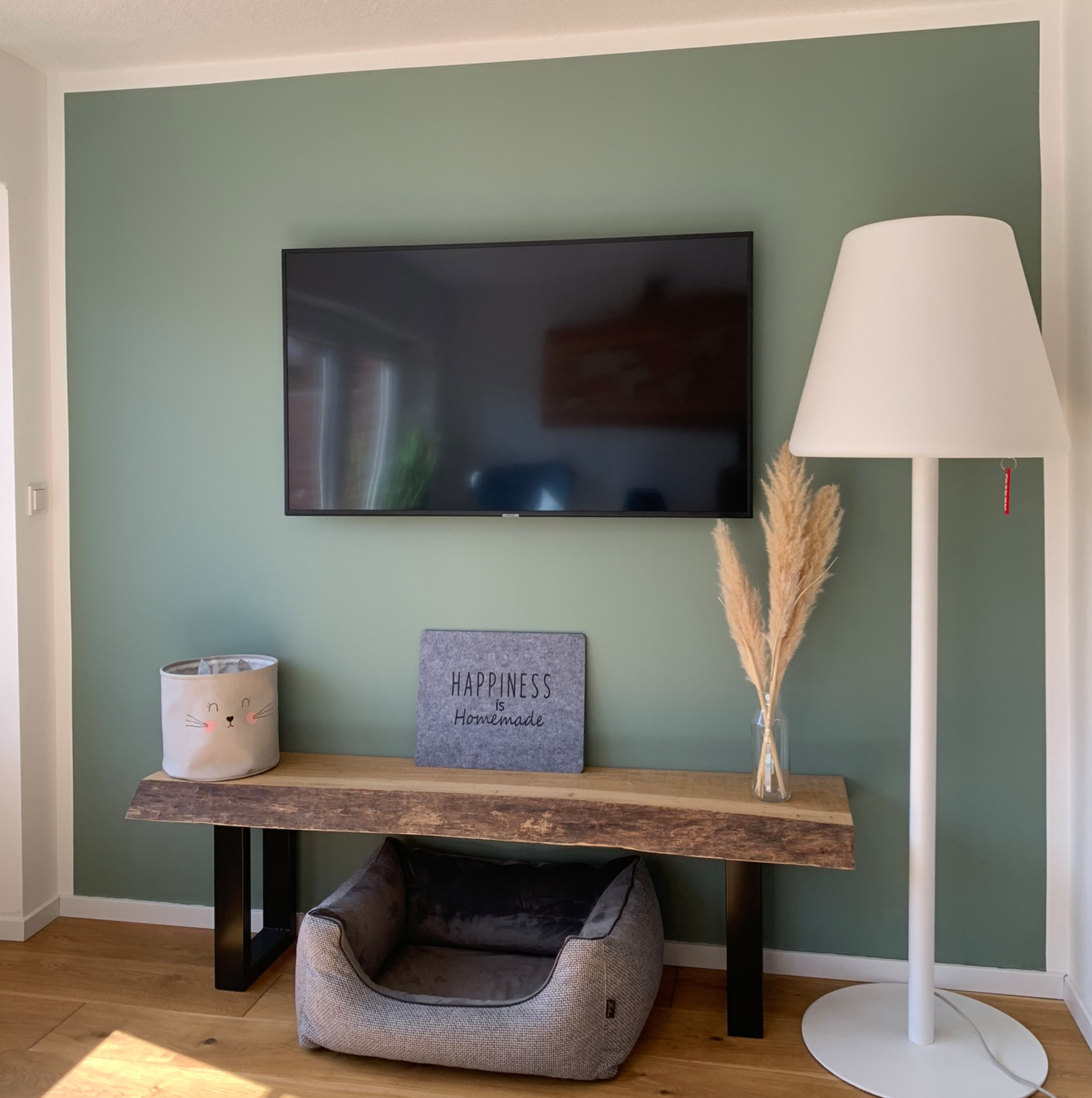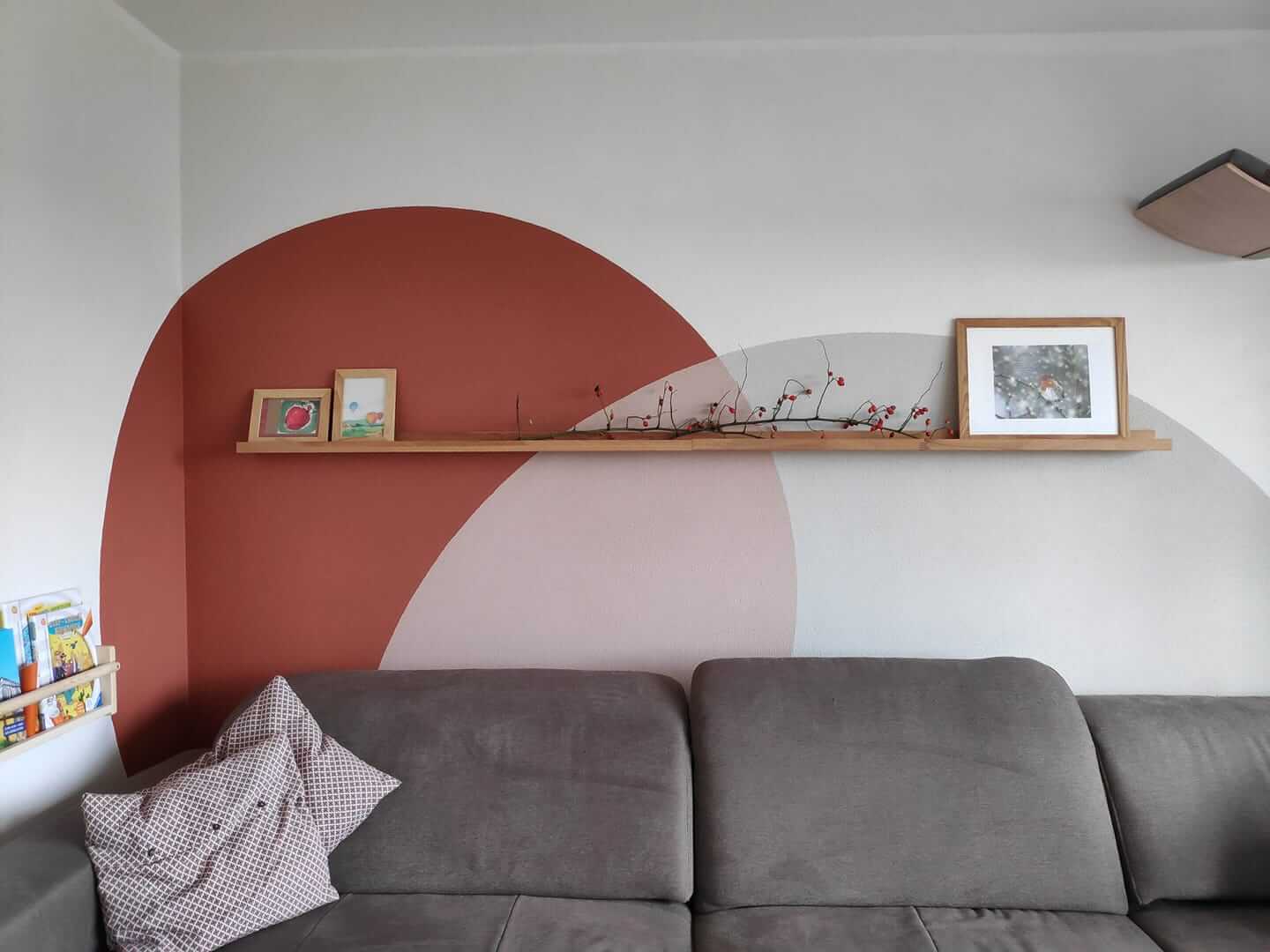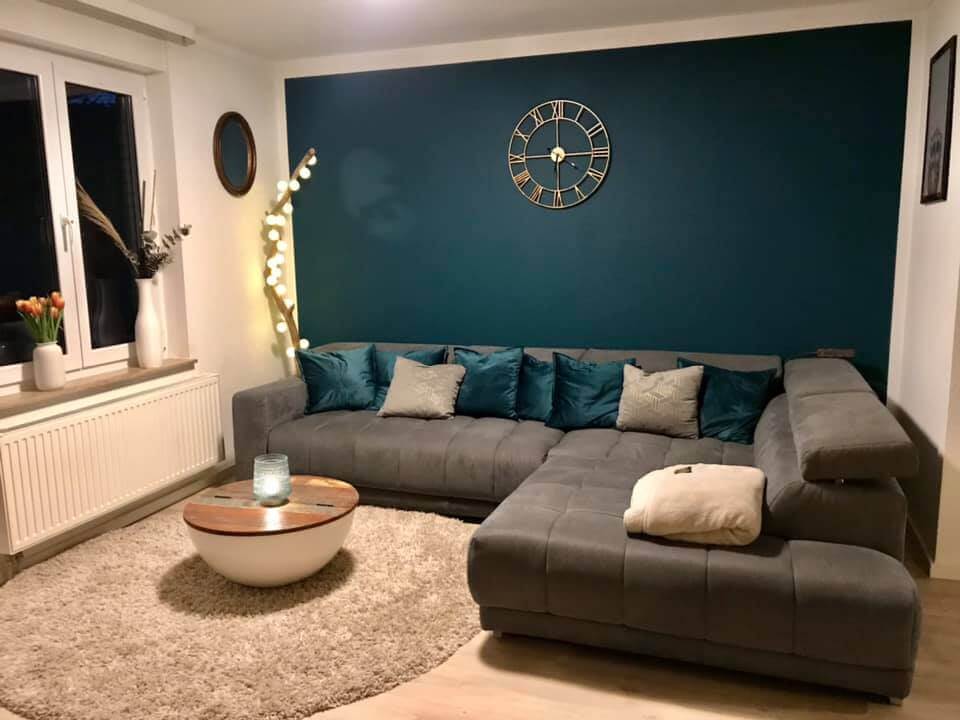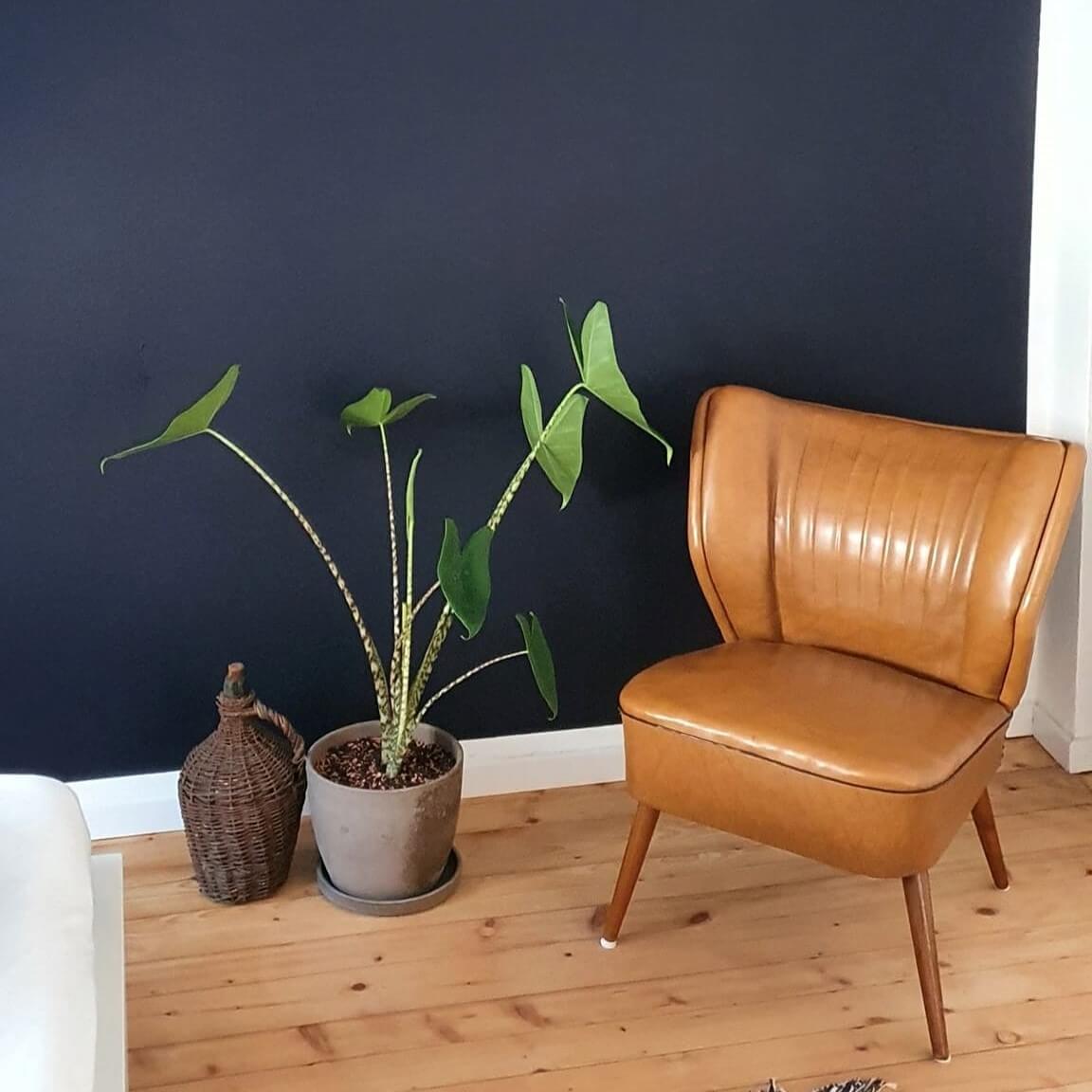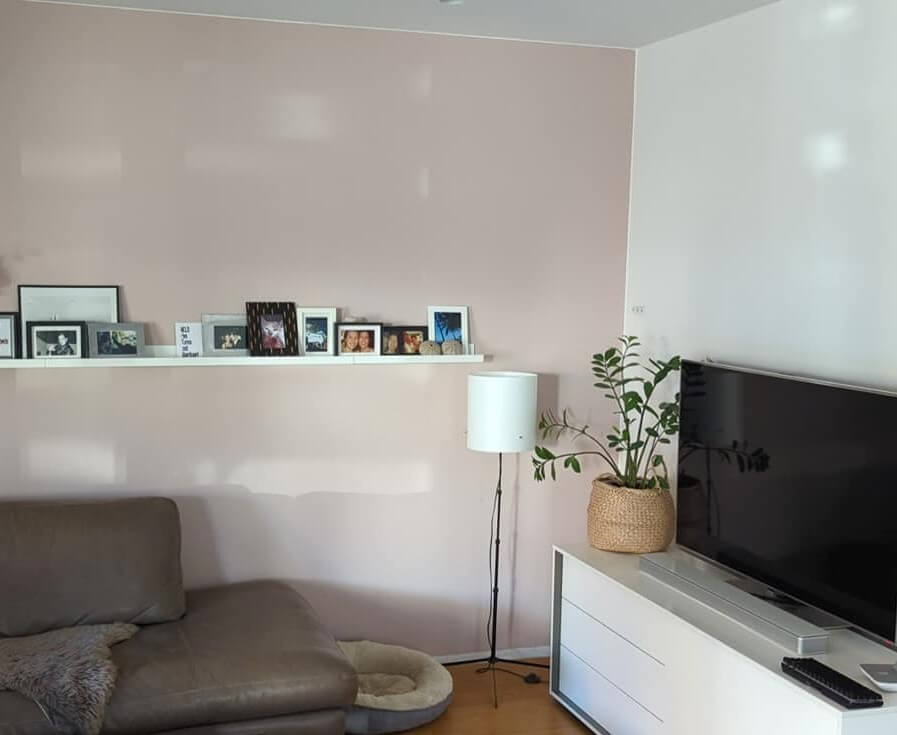Wall Design in the Living Room: Stylish Ideas & Tips
In Colour Worlds & Inspiration · 10 min reading time
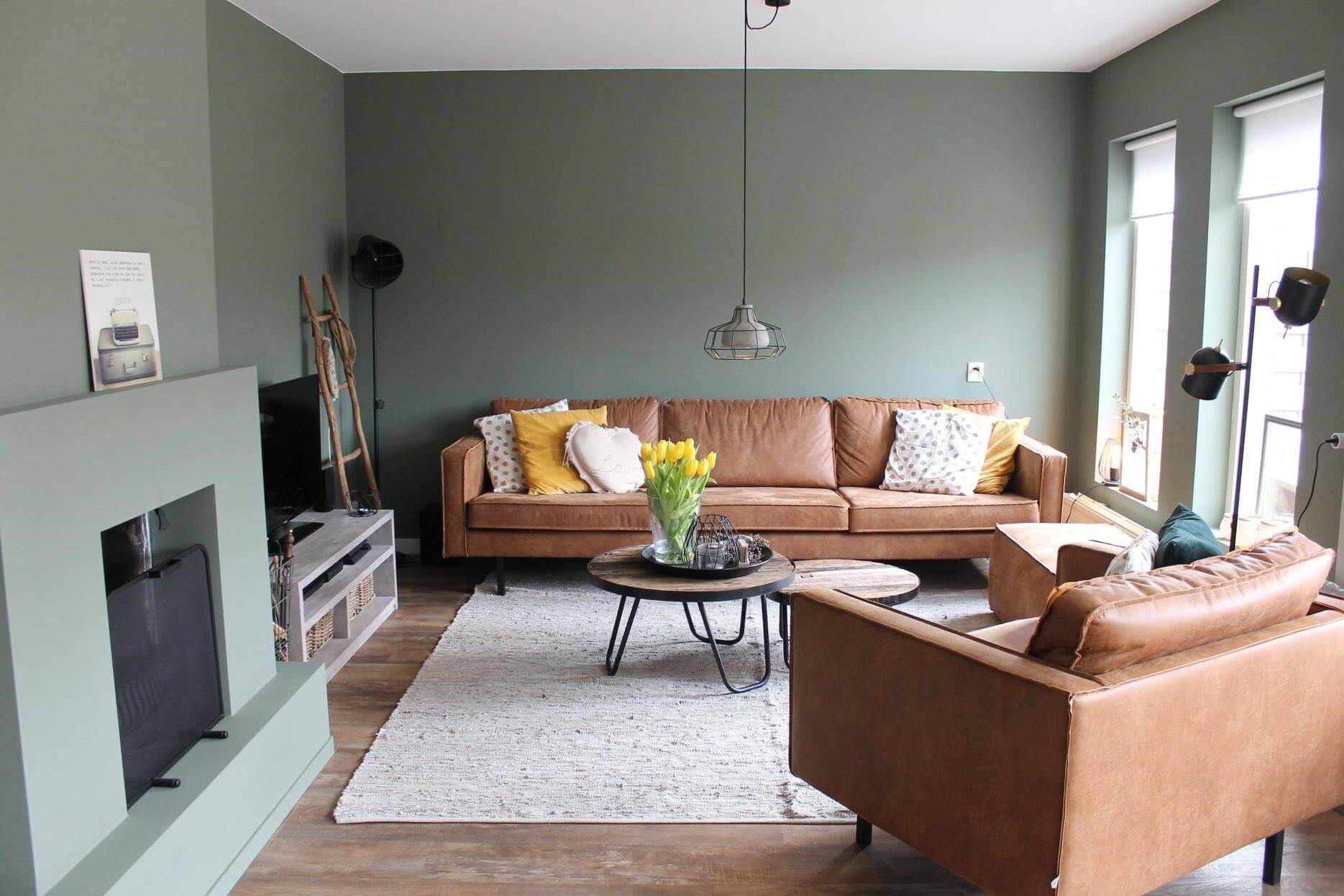
The living room is the central room of your home. It's where you spend cosy evenings with your family or friends. We'll give you some ideas and tips on how to decorate your living room walls to make this much-used space look its best. With a little colour, you can easily and stylishly transform your living room into a place full of cosiness.
Living room wall design: Ideas from our community
What wall designs are available for the living room?
If you want to decorate your living room walls, you have a wide range of options. Of course, you can paint your living room in the classic way or decorate your walls with patterned wallpaper. But also unusual ideas, such as walls in concrete or stone look, can give your room a very special flair. No matter which design you choose, it should always match the rest of your interior and emphasise your own style.
Wall design with colour
A very simple way to decorate your living room wall is to paint it. Achieve a great effect quickly and with little effort - no matter whether you give the room more cosiness with our chalk paints in calm, pastel shades, or you set accents with a bright colour.
If you use a subtle colour shade, you can paint the whole room in a calming way. A light, soft beige, or a tinted white, gives small, dark rooms more space. Use expressive colours like red or dark blue more sparingly. Dark colours can quickly become oppressive. Therefore, use them to emphasise certain areas, e. g. by colouring only the wall behind your sofa.
Of course, a combination of corresponding light and dark colour shades is also very interesting. For example, paint the lower part of your wall in a dark green and the upper part in a matching light green.
Use our ecological wall paint MissPompadour - The Valuable Wall Paint for a healthy indoor climate. It is very easy to apply and you can get it in many wonderful colour shades. This way you can realise all your living room painting ideas in no time at all! If you need help painting your walls, we have instructions and tips on painting walls for you.
Professional tip: Make large pieces of furniture "disappear" in front of the wall by painting them in the same colour shade as your living room walls. For less busy furniture, use our MissPompadour Matt Varnishes or paint them directly with the wall paint.
Video: Melina paints her house! Part 2: Living and dining room (suitcase camera)
Wall design with wallpaper
Wallpaper is the all-rounder when it comes to patterns and motifs. You can use them to design your living room wall individually. Very romantic, playful with floral motifs, in combination with old vintage furniture, or cool and casual concrete look to really bring out your industrial style - let your creativity run wild! For example, you can decorate one wall of your living room with a colourful, expressive photo wallpaper and paint the rest of the walls in a matching, subtle pastel shade. Keep in mind, however, that large motifs, especially in small rooms, can be a bit tiring in the long run.
Wall decoration for the living room
Different types of wall decoration offer you further possibilities for individual living room wall design. Here, too, the basic colour does not have to be white. Paint your living room walls in your favourite colour and set stylish accents with decorations. Pictures and picture walls are very popular. Harmoniously coordinated, you can use them to decorate the wall behind your couch with personal motifs and memories, for example.
With adhesive foils and stencils, you can conjure up motifs and beautiful sayings on your walls. In our shop you will find a large selection of creative stencils. There's bound to be something for you!
Decorative wall hangings such as artfully woven macramé give your living room a boho touch.
Mirrors are a great way to visually expand smaller spaces. Enhance this effect by placing them opposite a window.
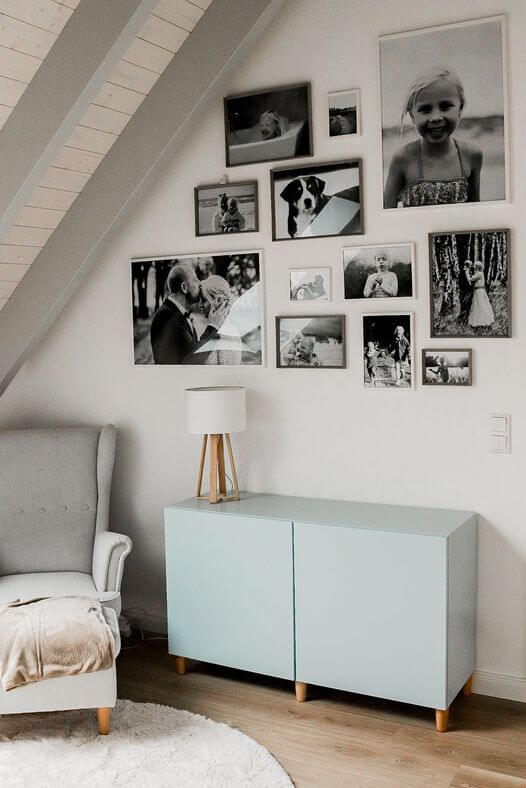
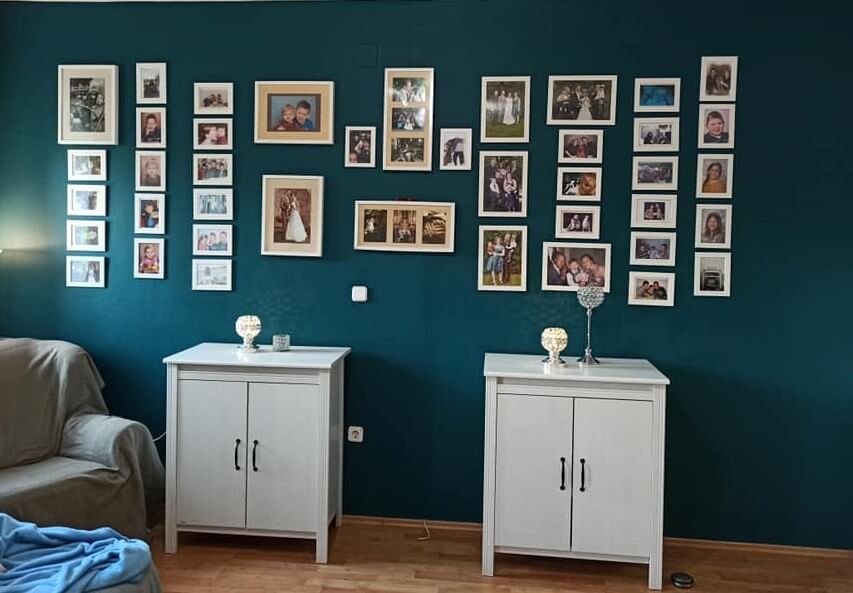
Wall design with wood, stone or concrete look
An alternative to painting or wallpapering the living room is to cover the walls with wood or stone, e. g. behind your sofa. Wood panelling can have very different effects, depending on the style. Natural wood radiates warmth and spreads cosiness. In the classic country house style, half-height wall panelling in muted tones is very popular. Give your old wooden panels a new coat of paint - our guide to painting wooden ceilings and panelling shows you how to do it easily.
A living room wall design in stone look or natural stone gives you a noble and easy-to-clean surface. Combine clinker brick with metal shelves and concrete-look walls, for example, to give your living room an industrial style.
Concrete walls are very much in vogue and have long been much more than a cool, unfinished shell. In the next section you will find some tips on how to create concrete-look walls yourself.
Colouring living room walls - ideas for more cosiness
Besides furnishing and decorating, colouring living room walls is the easiest way to significantly influence the atmosphere of a room. The loving design of your walls creates cosiness and expresses your very own style. A harmonious overall concept helps you to give your ideas a stylish framework
The right colour shade for your living room wall
First and foremost, of course, it is your taste that decides which colour is right for you to colour your living room walls. But your furnishings and the size or height of the room are also important. Each colour shade has its own effect and can complement a certain interior style.
- Grey t ones are the absolute classic - especially the interplay with white always looks very elegant.
- Blue and green t ones are usually rather cool and fresh and, in combination with white and beige tones, go very well with a Nordic Scandi look.
- Beige and earth tones have a calming effect and are great for combining with boho-style furniture, e. g. made of rattan or wood.
- Pink and violet reflect a romantic style. Cosy armchairs with floral or striped patterns add a baroque touch.
- Orange, red and yellow can be used well as accent colours. They convey cheerfulness and joie de vivre.
Painting the living room wall in concrete look
Designing a concrete-look living room wall is a real eye-catcher that many people want. If you would like to paint the living room TV wall in a concrete look, for example, there are special paints available in the trade for this purpose. These are usually applied in 2 layers with a spatula to create the structured surface of the concrete. Other possibilities are the use of mineral plasters or, of course, wallpaper in concrete look. Thin exposed concrete slabs are also available, which are applied to a wall like tiles, so-called rolled concrete.
A real eye-catcher: Accent wall with stucco
Walls with beautiful stucco ornaments are often found, especially in old buildings. If you want to give your living room wall this special, harmonious flair, you can achieve this very easily with stucco elements made of styrofoam.
For a living room wall design, decorate the transition between wall and ceiling with stucco strips, for example. This draws the eye upwards and visually raises low rooms. Or design your living room walls with square or rectangular elements (coffers). This way you achieve a structured but calming, elegant effect.
For a tone-in-tone wall design, first stick on the mouldings and then paint the entire wall uniformly. It looks particularly elegant if the mouldings contrast visually with the wall. First paint the stucco profiles in a light colour shade. Then apply them to your darker painted living room wall.
In our video you can see what you need to bear in mind when decorating your room with decorative mouldings:
FAQ: Frequently asked questions about wall design in the living room
If you haven't found what you are looking for in our article, we have compiled the most frequently asked questions for you here.
Which wall paint is suitable for small living rooms?
Choose light, cool colour shades for small living rooms - especially if you also want to paint the ceiling. These open up the room visually. If you want to paint your living room in several colour shades, we recommend that you use no more than 2. For your living room, we recommend our ecological wall paint MissPompadour The Valuable Wall Paint.
Which colour in the living room according to Feng Shui?
In Feng Shui, the colour scheme of your living room walls is based on the 5 elements of fire, water, earth, metal and wood. For perfect harmony, these are in turn aligned according to the points of the compass. Generally, warm colours from the wood or earth elements are well suited for living rooms, e. g. yellow or beige tones.
How do I design the wall behind the sofa?
The wall behind your sofa is the perfect place to paint an accent colour. However, if you already have a colourful sofa, the colour shades should not clash but still harmonise with each other. Or paint the wall the same colour as the couch. This makes a large sofa in a small room recede visually. A picture wall with decorative elements behind the sofa also becomes a real eye-catcher.
How do I design the TV wall?
As a general rule, design the wall in the living room behind the TV rather calmly. Garish tones and large patterns can be tiring on the eyes and don't exactly invite you to relax. It is entirely up to you whether you opt for light tones or go for something daring with a black wall. To make the TV disappear visually, you can also work with pictures for a gallery wall.

